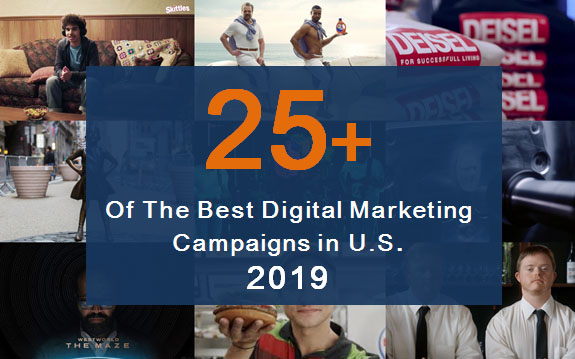Mastering B2B SEO: A 9-Step Guide to Boosting Traffic, Rankings, and Leads
Search Engine Optimization | Jul 22, 2024
Creating an effective B2B SEO strategy may seem like solving a complex puzzle at first. However, it’s a journey that, while challenging, is also incredibly rewarding for marketers who are ready to take on the task. The thrill of seeing your website climb the search engine rankings, attracting more organic traffic, and generating high-quality leads that can transform your business is a clear sign of the potential for growth and success in the field of B2B SEO. It’s an exciting prospect, isn’t it?
Why B2B SEO Matters?
Effective SEO boosts your online visibility and positions your company as a leader in your industry. By targeting the right keywords and optimizing your website, you can attract decision-makers from your target market, increase brand credibility, and drive conversions that contribute to your bottom line.

What You’ll Learn?
This guide will walk you through a step-by-step process to unlock the full potential of your SEO efforts. From defining your target audience and conducting an SEO audit to spying on your competitors and optimizing your on-page elements, each step is designed to help you improve your search engine rankings and attract high-quality traffic to your website.
By following these strategies, you’ll be well on your way to creating an SEO plan that drives traffic and generates valuable leads for your business.
Step-by-Step Guide to Crafting Your B2B SEO Strategy
1- Define Your Target Audience and Keywords
First things first, you need to understand who you’re talking to. Visualize your ideal client: what industry are they in? What are their pain points? Once you have a clear image, you’re well-informed and ready to think about what they might type into a search engine.
This is where keyword research tools like SEMrush, Ahrefs, and Google Keyword Planner come into play. They’ll help you find the perfect long-tail keywords specific to your industry and highly relevant to your audience.
Actions to Take:
- Create detailed buyer personas to determine your client’s needs and behaviors.
- Utilize keyword research tools to identify relevant search terms.
- Concentrate on long-tail keywords to address specific queries.
2- Audit Your Current SEO Performance
Before you can move forward, you need to understand where you stand. Conducting a thorough audit of your website’s SEO performance is like taking your car in for a check-up. You’ll want to evaluate your site’s structure, content, and backlinks to identify areas for improvement. This will provide a solid foundation for your SEO strategy. For companies in the software industry, this might involve focusing on technical SEO for SaaS, ensuring that your site’s technical elements are optimized to meet industry standards.

Actions to Take:
- Use tools like Screaming Frog or Moz to conduct a technical SEO audit.
- Identify and fix broken links, duplicate content, and slow-loading pages.
- Assess the quality and relevance of your current content.
3- Spy on Your Competitors
Who doesn’t love a bit of detective work? You can uncover opportunities and gaps in your approach by analyzing your competitors’ SEO strategies. This isn’t about copying them – learning from them and doing it better.
Actions to Take:
- Use tools like SimilarWeb to identify your top competitors.
- Examine everything you can from their keyword rankings, backlink profiles, and even content strategies.
- Identify content gaps that you can address with your expertise.
4- Develop High-Quality Content
Content is the heart and soul of SEO. It’s not enough to just churn out articles—you need to create valuable, engaging content that addresses the real needs of your audience. Think blog posts, whitepapers, case studies, and videos that showcase your expertise and solve your audience’s problems.
Actions to Take:
- Create a content calendar to plan your posts and updates.
- Write content that answers common questions and addresses industry pain points.
- Include multimedia elements such as images, videos, and infographics to enhance the engagement of your content.
5- Optimize On-Page Elements
Now that you’ve got great content, ensure it’s optimized for search engines and users. This involves tweaking your website’s title tags, meta descriptions, and headers and ensuring a smooth user experience.
Actions to Take:
- Optimize title tags, meta descriptions, and headers with your targeted keywords.
- Ensure your website is mobile-friendly and provides a great user experience.
- Use internal linking to help search engines understand your site’s structure.
6- Boost Your Off-Page SEO
Think of off-page SEO as your website’s reputation. Building high-quality backlinks from reputable websites is crucial for increasing your domain authority and credibility.
Actions to Take:
- Contact industry publications and websites to explore guest posting opportunities.
- Use link-building tools like Ahrefs to find potential backlink opportunities.
- Engage in PR activities to earn natural backlinks from news sites and industry blogs.
7- Don’t Forget Local SEO
If your business serves a local market, optimizing for local search is a must. This helps you attract clients in your area who are searching for the services you offer.

Actions to Take:
- Create and consistently update your Google My Business profile.
- Add your business to local directories and industry-specific listings.
- Collect and respond to customer reviews to build local credibility.
8- Monitor Your Progress
Tracking your SEO performance is essential to understanding what’s working and needs improvement. Regularly monitor your metrics to stay on top of your SEO game.
Actions to Take:
- Use Google Analytics and Google Search Console to monitor traffic and performance.
- Monitor keyword rankings, organic traffic, and conversion rates.
- Conduct A/B testing to find the best-performing content and strategies.
9- Report and Refine
SEO is not a one-and-done deal. It requires continuous refinement and ongoing effort. Regularly reporting on your progress helps you stay aligned with your goals and adjust your strategy as needed.
Actions to Take:
- Create monthly or quarterly SEO reports to track your key performance indicators (KPIs).
- Analyze what’s working and what’s not, then adjust your strategy accordingly.
- Stay updated with the latest SEO trends and algorithm changes to keep your strategy effective.
Conclusion
By following these nine steps, you can craft a comprehensive B2B SEO strategy that drives organic traffic and generates high-quality leads. Remember, SEO is a continuous journey that requires regular monitoring, adaptation, and a bit of creativity. So, gear up and start optimizing your website today.
Warning: Undefined array key "sidebar_ads" in /home/dmc/public_html/wp-content/themes/DMC/functions/helpers.php on line 824





